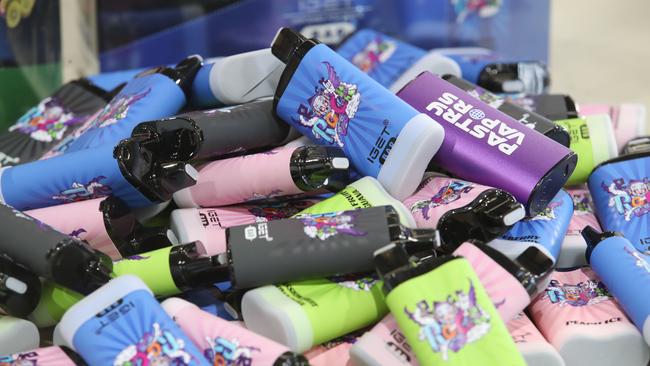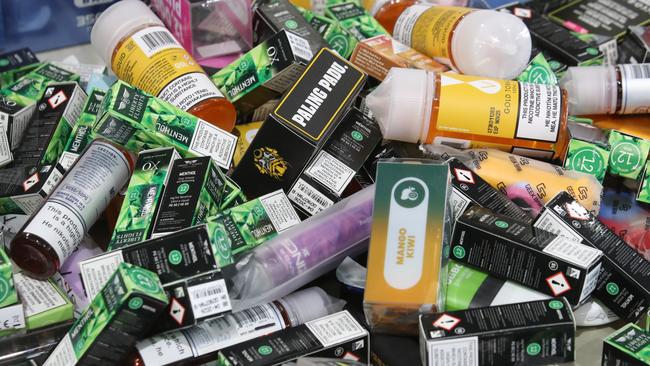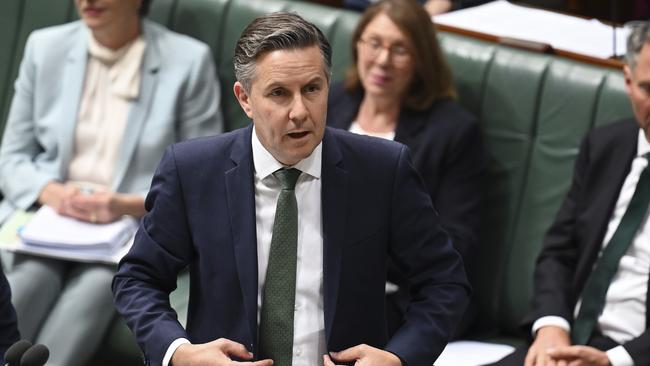Vaping a gateway to smoking, drugs among men
Vaping rates have tripled among men as new research finds vapes — originally marketed as a way to help curb nicotine addiction — are a gateway to smoking and illicit drugs.

Vaping rates among Australian men have more than tripled between 2020-2022, with new research finding vaping is a gateway to smoking and illicit drug use, despite the products initially being introduced to help curb nicotine addiction.
Nearly one in three Australian men aged between 18-24 year-old reported vaping in a nationwide study by Ten to Men.
Rates of vaping are 10 times higher among younger men than their older counterparts, with about 28 per cent of people who vape reporting they do so more than five times a day.
Alarmingly, men who vape are 59 per cent more likely to take up smoking later, with Australian Institute of Family Studies and Ten to Menprogram leadDr Sean Martin concerned by the “huge pool of potential new smokers” that could be developing.
“That cuts against this advice that vapes can help people come off nicotine,” Dr Martin said.
“In fact, it goes the other way — if you are exposed to vapes very early on, which data suggests that you can be, then there’s an increased likelihood that you’ll become a smoker yourself.”
Men who vape are also 33 per cent more likely to engage in later illicit drug use than their non-vaping peers, the study found, while vaping rates are about five per cent higher in major cities compared to regional and remote areas, suggesting access may be a key driver of use.

Lead author and Senior Research Officer at AIFS, Constantine Gasser, said vaping has become a “public health issue in its own right” with limited evidence to suggest vaping can help people quit smoking.
“Previous research has shown that vaping does have many short term health effects such as toxicity, poisoning, addiction, increased blood pressure, and increased heart rate,” he said.
“We have shown that vaping is causing harm in terms of leading to a slate of risky health behaviours, illicit drug use and smoking.”
Quit Director Rachael Andersen said the study underscores how powerful the industry has become by successfully getting a whole new generation addicted to nicotine.
“We’ve seen this industry just completely take over and start to market these products to people who’ve never smoked or vaped before, so we’re seeing this whole new generation emerge who these products were never designed for,” she said.
It comes as the Albanese government pushes for a crack down on vaping following legislation introduced in January that banned the importation of vapes.
Ms Anderson backed the proposed ban, saying it would reduce young people’s exposure to vapes.
“We’ll see a decrease in access to vaping products – it won’t be on our high streets, it won’t be easily accessible for kids when they’re walking home from school or there in the corner shops,” she said.

She encouraged those looking to quit smoking or vaping to seek support,
“(Quitting) is not easy and sometimes it takes several attempts, but it doesn’t matter if it’s your first time or your tenth time,” she said.
“Our Quitline services are really well equipped to be able to support people through that process.”
Minister for Health and Aged Care Mark Butler said this latest research supports the government’s strong action.
“Young Australian men were sold a furphy from Big Tobacco. Vaping is addictive and vapes contain over 200 chemicals that will harm your health,” Mr Butler said.
“It’s taken us over 40 years to get male smoking rates down, this is a major public health issue, and the Government won’t allow another generation of Australian men to be lured into addiction by Big Tobacco.”




To join the conversation, please log in. Don't have an account? Register
Join the conversation, you are commenting as Logout